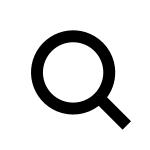Nicolás García Uriburu
Nicolás García Uriburu (1937–2016) was an Argentinian visual artist and activist who trained as an architect and became a celebrated painter. He began reflecting critically on the antagonism between nature and culture in the 1960s. His concern for environmental issues inspired a series of paintings that superimposed urban landscapes with images of animals.
The wallpaper presented in the exhibition depicts dolphins against the backdrop of a New York skyscraper. The animals in Uriburu’s work symbolise freedom. The artist became best known for a series of actions in which he would use a harmless microbiological colouring agent to turn bodies of water a vibrant shade of green. His first colouring took place at the Venice Biennale, where, as a dissident action, he dyed the Canal Grande green. Over the course of thirty years, the artist conducted more than twenty colourings worldwide, including one in the harbour area in Antwerp. Uriburu worked with Greenpeace activists in numerous campaigns that aimed to raise awareness of the importance of conserving natural habitats for endangered species. The artist’s commitment to environmental activism remained a central theme throughout his life and work.

© Photography by Kristien Daem. Courtesy of M HKA
Exhibited works:
Triptych of Freedom (series: Antagonism Between Nature and Civilisation), 1974
Coloración del Puerto de Amberes, 1974
Courtesy Fundación Nicolás Garcia Uriburu
